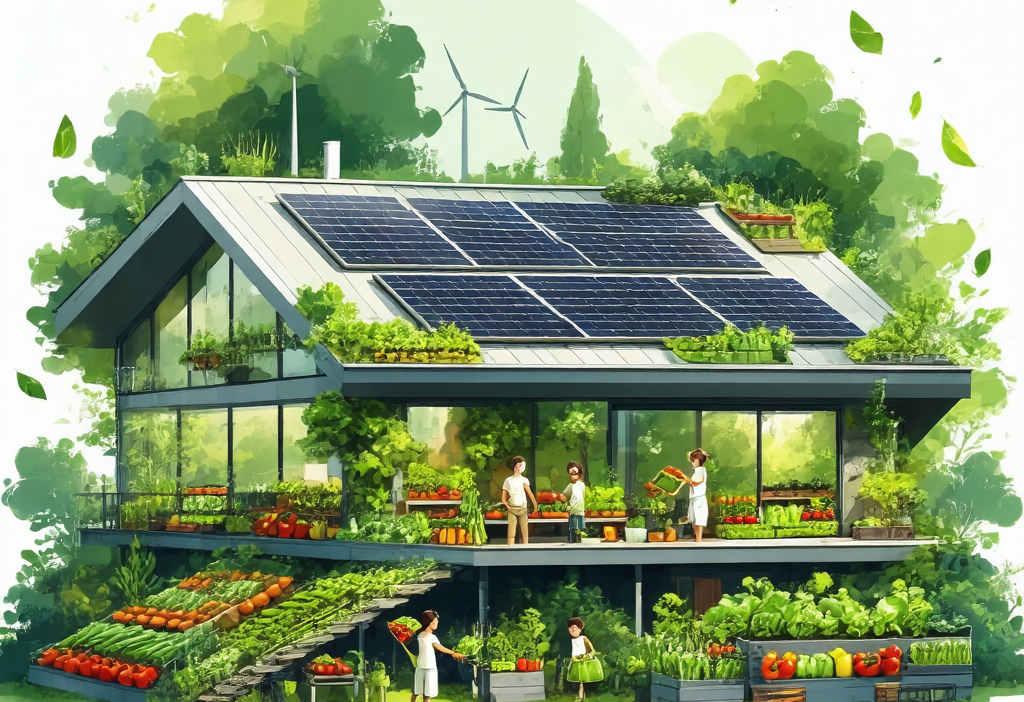Embracing Sustainable Living in the Modern Age
Welcome to our detailed guide on sustainable living. In today’s world, adopting eco-friendly practices isn’t just a trend—it’s a necessity. This article explores practical steps you can take to reduce your environmental footprint while enhancing your quality of life.
Why Sustainable Living Matters
Sustainable living is about creating a balance between human needs and the preservation of our planet’s resources. It’s not just about saving energy; it’s about making conscious choices that benefit both you and the environment. Here are some compelling reasons to make the switch:
- Reduced carbon footprint
- Lower utility bills
- Healthier living spaces
- Promotes a sense of community and shared responsibility
Tips for Reducing Energy Consumption
Cutting down on energy use is one of the most effective ways to live sustainably. Here are some actionable tips:
- Switch to LED lighting: LEDs consume up to 75% less energy than traditional bulbs and last much longer.
- Use smart power strips: These devices help reduce standby power consumption by turning off unused electronics when not in use.
- Invest in solar panels: Harnessing the sun’s energy can significantly lower your electricity bills and reduce reliance on fossil fuels.
Waste Reduction Strategies
Reducing waste is a critical component of sustainable living. Here are some strategies to consider:
- Recycling
- Ensure you’re recycling materials like paper, plastic, glass, and metal in accordance with local guidelines.
- Composting
- Transform kitchen scraps and yard waste into nutrient-rich compost for your garden.
- Buy in Bulk
- Purchase items like grains, nuts, and cleaning supplies in bulk to minimize packaging waste.
Sustainable Eating Habits
Your dietary choices have a significant impact on the environment. Here’s how you can eat more sustainably:
“Eating with sustainability in mind isn’t about deprivation; it’s about making informed, ethical choices that support both your health and the planet.” – Environmental Expert
- Adopt a plant-based diet: Reducing meat consumption lowers greenhouse gas emissions associated with livestock farming.
- Support local farmers: Buying locally grown produce reduces transportation emissions and supports your community economy.
- Choose seasonal foods: Fruits and vegetables that are in season are typically fresher, tastier, and require less energy to grow.
Water Conservation Techniques
Water is a precious resource. Here’s how you can conserve it effectively:
- Fix leaks promptly: A small leak can waste gallons of water over time.
- Install low-flow fixtures: Low-flow showerheads and toilets can significantly reduce water usage without compromising performance.
- Harvest rainwater: Use collected rainwater for watering plants or washing vehicles.
Embracing Sustainable Transportation
Your choice of transportation also plays a role in sustainable living. Consider these options:
- Carpooling
- Sharing rides reduces fuel consumption and cuts down on traffic congestion.
- Biking or Walking
- These eco-friendly transportation methods not only reduce your carbon footprint but also promote physical health.
- Public Transit
- Using buses, trains, or subways is a sustainable alternative to driving alone.
Educating and Inspiring Others
Sustainable living becomes even more impactful when you share your knowledge with others. Here’s how you can inspire change:
- Organize community clean-up events to promote environmental stewardship.
- Host workshops or seminars on sustainable practices to educate your peers.
- Use social media to spread awareness and share tips for eco-friendly living.
Conclusion
Making the switch to a more sustainable lifestyle is an ongoing journey that requires commitment, creativity, and a willingness to adapt. By implementing these strategies, you can contribute positively to environmental preservation while enjoying the benefits of a healthier, more mindful way of living.
We encourage you to take the first step today and explore how small changes can lead to significant long-term impacts. Together, we can create a greener, more sustainable future for generations to come.





